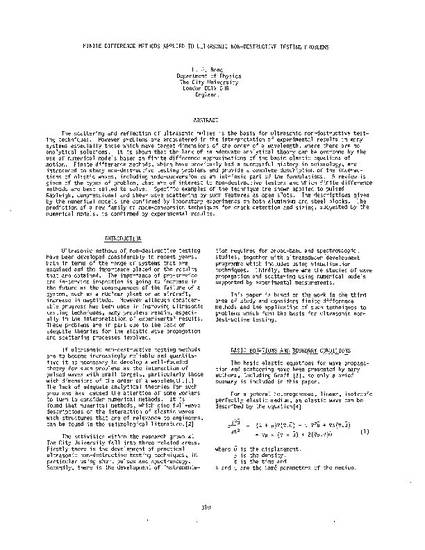
The scattering and reflection of ultrasonic pulses is the basis for ultrasonic non-destructive testing techniques. However problems are encountered in the interpretation of experimental results in many systems especially those which have target dimensions of the order of a wavelength, where there are no analytical solutions. It is shown that the lack of an adequate analytical theory can be overcome by the use of numerical models based on finite difference approximations of the basic elastic equations of motion. Finite difference methods, which have previously had a successful history in seismology, are introduced to study non-destructive testing problems and provide a complete description of the interactions of elastic waves, including mode-conversion as an intrinsic part of the formulations. A review is given of the types of problem, that are of interest to non-destructive testers and which finite difference methods are best suited to solve. Specific examples of the technique are shown applied to pulsed Rayleigh, compressional and shear wave scattering by such features as open slots. The descriptions given by the numerical models are confirmed by laboratory experiments on both aluminium and steel blocks. The prediction of a new family of mode-conversion techniques for crack detection and sizing, suggested by the numerical models, is confirmed by experimental results.
Available at: http://works.bepress.com/leonard_bond/14/
